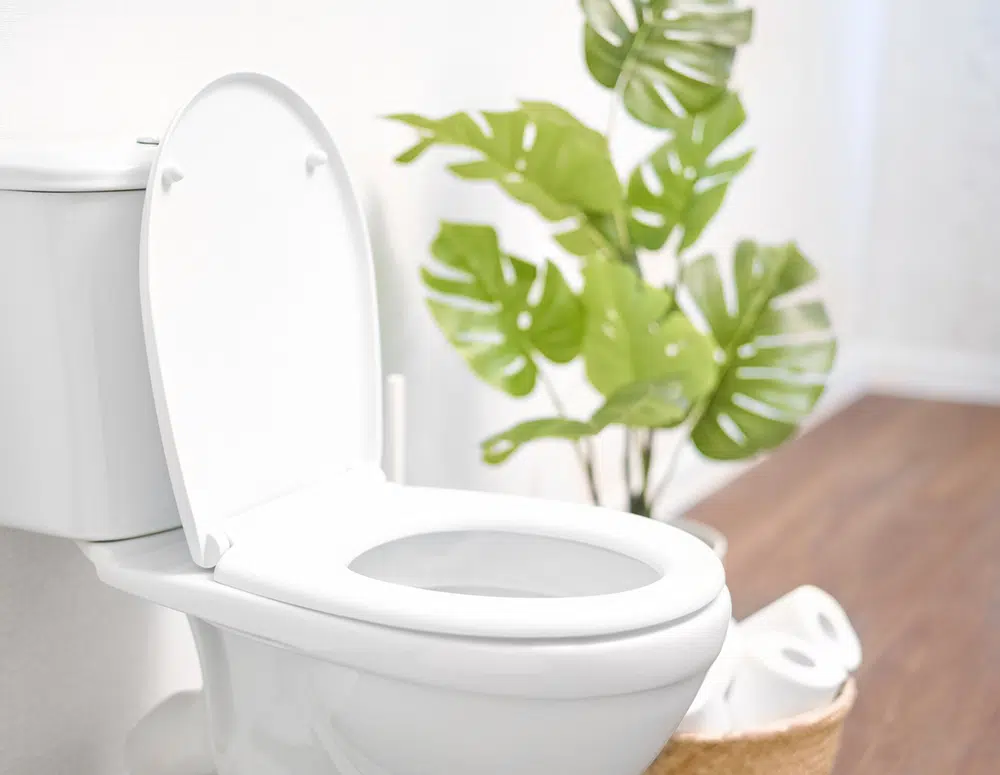Out With the Old: Upgrading Your Toilet

Have you ever wondered, “What type of toilet should I change to?” As durable as toilets are, they all must be replaced at some point. It’s not uncommon for a homeowner or landlord to replace toilets that still work but are not up to today’s standards! Due to many new features and designs, picking the toilet that is right for you can be a challenge. If your toilet is nearing the end of its life or if you’re just eager to be compliant with California’s water conservation codes, there are lots of options to pick from! In this article, we will be going over a few of those options!
Did You Know That There Are Multiple Ways a Toilet Can Flush?
Chances are you have what is called a gravity-feed toilet. A gravity feed toilet has a rubber flapper at the bottom of the tank, which opens up and lets gravity pull water into the bowl, flushing everything away. But there are a couple of other flush mechanisms to consider.
A pressure-assisted toilet is a design that uses air pressure to produce a faster, more powerful flush. The most common use for pressure-assisted toilets is in public restrooms, but they can be installed in homes as well. Pressure-assisted toilets stay cleaner longer and are less prone to clogs. However, they tend to be much louder than gravity-feed toilets and are more expensive to buy and install.
A great alternative is the dual flush toilet, which has both a gravity feed and pressure-assisted flushing system. With a dual flush toilet, you can use a water-saving gravity feed flush for liquid waste, or a bowl-cleaning, clog-busting pressure-assisted flush for solid waste.
Don’t like touching the handle after use? A cleaner alternative is touchless flushing toilets. Some new toilets feature touchless flushing right out of the box, but most toilets can be modified with an aftermarket touchless flush system. With a touchless flush, users flush the toilet by waving their hands over a sensor. It’s a plus for homeowners who worry about germs, and it can be a big help to anyone who has trouble using a traditional flush handle.
Now for the bowls
There are all sorts of sleek and unusual shapes among designer toilets, but there are a couple of basic design elements that all toilet shoppers should think about before they buy: bowl height and bowl shape. The standard bowl height is 15 inches, but this can range from as low as 10 inches and as high as 20. Taller toilets can be beneficial for people with limited mobility because they reduce the amount of effort it takes to sit down and stand up. If that’s not an issue, and if there are small children in the home, a lower toilet might work well for everyone. Lower toilets can also assist in assuming a squatting position, which is a beneficial posture when it comes to using the restroom. Just ask Squatty Potty!
As for bowl shape, there are two main choices: elongated and round. Elongated toilets have an egg-shaped opening and are considered by many to be more comfortable because they’re more spacious. Round bowls may be less comfortable by comparison, but because they take up less space, they’re still used in smaller bathrooms. If you’d like to split the difference, elongated toilets come in a variety of lengths that allow you to get the benefits of the oblong shape in a tighter space!
But Can I Save Money on My Water Bill With Certain Toilets?
Of course! Under California’s new mandatory standards you won’t be able to buy a 1.6-gallon toilet in California. Toilets sold in CA can’t use more than 1.28 gallons per flush. Federal standards limit the flush volume of all new toilets to be 1.6 gallons or better, which is a big improvement on older, unregulated toilets that used as many as 5 gallons of water per flush. So, say goodbye to that old blue toilet from the ’60s and upgrade to a more efficient toilet today!

